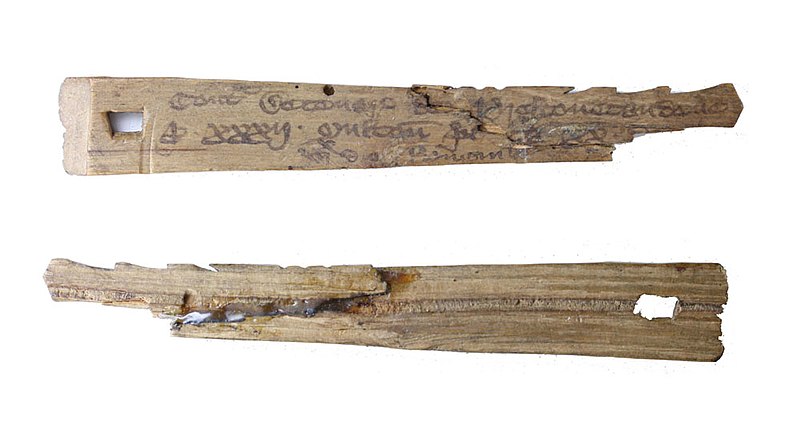
Until 1826, the British Royal Treasury recognized notched sticks as proof of payment. In a practice that had begun in medieval times, a debt would be recorded on a “tally stick,” and then the stick would be split lengthwise, with the shorter portion, the “foil,” given to the debtor and the longer portion, the “stock,” held by the creditor. Because the two halves of the stick could be matched together, this gave both parties a record of the deal, and the valuable stock could then be traded on a secondary market.
Accumulated tally sticks might have given us a valuable record of British monetary transactions, but unfortunately most of them have been lost. In 1834, after the advent of paper ledgers, it was decided to burn 600 years of accumulated tally sticks in a coal-fired stove in the House of Lords. A chimney fire resulted, destroying most of the Palace of Westminster.
